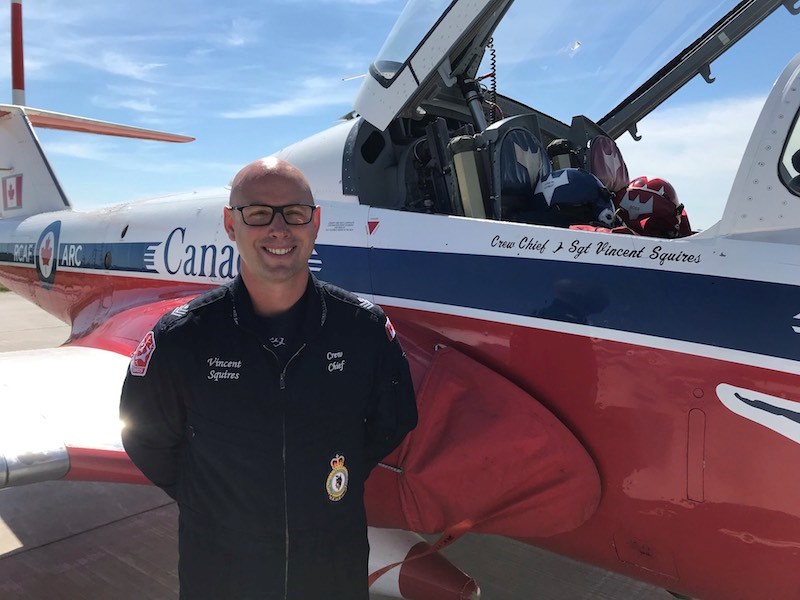The Canadian Forces Snowbirds 431 Air Demonstration Squadron, and its crew chief Sgt. Vincent Squires, who grew up in Thompson, are performing at the Thompson Airport June 17.
“This is coming up on my second year as crew chief,” said Squires, who is looking forward to connecting with friends and family in Thompson this summer. “I called Thompson City Hall and the person in charge of events. They said they were very interested in the airshow. I’m really excited. I have grandparents, an uncle and some cousins, my dad, stepmom, brother and sister. So, I’m really looking forward to it. It’s a once in a lifetime opportunity, and something I always wanted to do. When people see us, I want them to come up and say hi. Don’t be shy.”
The show will include an air demonstration as well as a ground show that gives the maintenance team a chance to introduce themselves, explains Squires, noting that there is a technician in every plane. “There’ll be high-speed passes, bursts, loops and at one point we’ll do a heart.”
Squires has been with the Snowbirds since 2011. His current role as crew chief is no small undertaking, considering the Canadair CT-114 Tutor jets used by the Moose Jaw based Snowbirds are over 50 years old. There are 11 jets in every performance, nine for the show and two spares. Each aircraft is reconditioned, upgraded and maintained to military standards by Squires and his colleagues. Approximately 80 Canadian Forces personnel work with the squadron full-time. Twenty-four highly specialized personnel are in the show team that travels during the season.
“Each technician has a specialty,” Squires explained. “We have aviation technicians who do engines, flight controls and landing gear. Then we have aircraft structures, which do the paint, the body repair and our life support equipment. Then we have an avionics technician who takes care of the gauges, electrical and communication. We also travel with our tools in case something happens between stops.”
Squires said that each airframe, composed of the fuselage, wings and tail, has a maximum number of flying hours before it is swapped out.
“We get new ones reactivated,” he explained, adding that the Canadian Armed Forces has numerous spares due to the airplane’s prolific historical use.
“They were primary trainers, so we reactivate them into the Snowbird program. Modifications happen regularly, that happens out of a facility in Trenton, Ontario.”
It takes about 30-40 minutes to inspect each plane before a show, and 45 minutes to one hour for a post-flight inspection, Squires says. “Then, if something happens, we make the repair. Because the Snowbirds have been around for 50 years, they have really pushed the modifications, and perfected the inspection cycle to avoid all the unpredictable issues. We do a periodic inspection every 400 hours. The airplane goes to that third line facility and gets a full overhaul. Then every 220 hours the engine gets an overhaul. We are constantly doing brakes and tires.”
It took Squires approximately one year to get up to speed in the Snowbirds program after transferring from working on CC-130 Hercules aircraft.
“It was probably about nine months before I deployed with the show team,” he said. “I got there in 2011 and had my training in the fall. Then it was learning the ins and outs after the classroom portion.”




